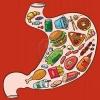Search the Community
Showing results for '"Weight gain"'.
Found 15,901 results
-


Just Curious...Post Op Depression/Anxiety
starryeyed replied to CandiOPanda's topic in POST-Operation Weight Loss Surgery Q&A
Thanks for the info about Wellbutrin. I guess I am afraid to take anti-depressants because so many of them have weight-gain as a side effect, except Wellbutrin, which is why I initially thought it would be a good one to try. I probably should see what the dr. says. -


Breakthrough! Women 48 to 55 - MUST READ
BajanSleeve posted a topic in Gastric Sleeve Surgery Forums
Guys, I am so happy to say that I have a positive update and one that might help other women in the 45 to 55 age category who are going to do VSG or in the process of having had it and experiencing difficulty getting weight to move. I am very hard on myself. While I was not being perfect on my journey, I have a tendency to always feel that if something is not going right, it is all my fault. I was a food addict for so many years and did everything wrong that I almost felt like when my weight plateaued and then stopped and then I started to gain weight that it was just because I let myself down. To cut a very long story short. I had a gynecological emergency about a month ago and ended up having to go through a bunch of tests. It was discovered that I was producing next to zero progesterone and my estrogen was also extremely low. It was causing me SO MANY problems which I will not get into so that I will not digress from the main point. As a result I was put on hormones and almost immediately I started to loose weight again! I have lost 10 lbs since I started taking hormones 3 weeks ago. The reason why is that hormones have a major role to play in weight loss and weight gain. The reason why I was gaining and not loosing was not because I was being so terrible in my disciplines but because the lack of estrogen and progesterone, the total imbalance was actually causing me to GAIN weight. So I am working with my doctor now to see how HRT may be able to not only help my perimenopause/going into menopause issues but also to help bring better balance to help the weight loss process kick in further. I feel like an entirely different woman - I cant even articulate it the difference in overall feeling but certainly the fact that I have lost the weight I had gained and now back to making the scale go down instead of up. You can read my previous thread to get a better context of where this post is coming from. If you are having similar struggles and are female in the age range of 45 to 55 it might be well worth your time to have your hormone levels tested and see if hormone therapy can help you get balanced again and improve your weight loss. I am just one lbs away from being in another weight bracket and after not loosing for 4 months I feel like a million bucks There are many articles and information on Google that you can look up and research regarding hormonal imbalance and the role it might be playing in extremely difficulty in weight loss, especially in women of a certain age. I am just putting this out there for your consideration in case you are a woman like me that may be struggling in this area and not even know it. Talk to your gyno and get your hormones tested. I will soon post an updated photo when I hit that next weight bracket -
Wow...didn't think THAT would be my title today! This morning I had in mind..."1st day of the Diet" or something else really benign (my insurance requires a 6 month PCP supervised diet/exercise history). OK on with the story. I spent the weekend wildly researching and typing up stuff in anticipation of my PCP appointment today. I put together a form for the Dr. to easily fill in each time. I also put together my family history...wow, was that an eye opener! I woke up nervous...let me back up... I'd been to the PCP last month for my physical follow up. I had just lost 25 lbs. on another low fat diet/fat absorbing pills, so my weight was down some, but I was still Obese (I wanted to make the best case I could to my PCP). My PCP came in and we talked, she supported my looking into the LAP-BAND®® and gave me names of surgeons and I picked up the diet plan to review. Then I went to seminars at two hospitals that are 'Centers of Excellence' for bariatric surgery in town (with my skinny DH) and found out what this was all about...I wasn't certain that I'd be approved by insurance...it's like an evil game. The seminars stated I needed to show I was a diet 'failure', so I quit the diet pills until my official start. I know, this all seems counter-intuitive since I'd just lost some weight, but it's not like I haven't just been a lot heavier, I'm an expert now an yo-yoing...I hate insurance and I'm just starting this (don't they know yo-yoers that are obese have even more health risks?). By the end of the month I was only up a few pounds more (less fast than I normally gain). So I'm back to where I began...I woke up nervous today...weighed myself...quite a few pounds over 35 BMI...but, what if their scale was way different than mine?!...No! I can't be too close to the 35 BMI when I start!!! OK, calm down, I know I've read some things online about this...ankle weights some suggest?...nope, my ethics won't let me go there, sorry...Next-eat a lot before you go...and drink a lot...OK, I can do that...bowls of cereal later I was ready to burst...Next-It's snowing for the first time...layers are good! OK, I need to time the water just right. I had incontinence surgery 3 yrs. ago (hysterectomy and the sling)...let's just say I was back to the Urologist last week and he told me "You're the first patient I've had where the procedure failed! You'll have to use the back door to leave here so my other patients can't see you, Ha Ha!" Lucky me!...I'm not laughing...because if I do...I'LL PEE! Now back to drinking water...water bottle in hand, I get in the car...the Drs. office is 1/2 hr. away...no problem. I'm dancing by the time I get there (the pee dance)! 15 min. wait...I get to the room with the Nurse and she pulls the digital scale to the middle of the open door "I need you on the scale" she yells from outside the room. What?!! Was the scale too close to the cabinet that my fat hips couldn't get on where it was...no?!!! Could we maybe close the door...no?!!! I glance wildly side to side to see who heard and if there was any patient coming down the hall who might be scarred by this site. Right, Left, no one...I can do this. I take off my coat and then she says it..."My you have a lot of layers on!"...."Yeah, it's cold outside." I manage to squeak out. On the scale I go...uh oh...my evil plan worked...too well! AHHH!!! I'm 5 pounds above where I thought I was...my scale at home is too light...I've gained weight (as usual, but are they going to be mad and not support me getting the LAP-BAND®®?)!!! Oh no!!! She flips through my charts. I try to distract her "I feel like I'm back at weigh in's at the group diet meetings-this is so embarressing!" (what did I just say?) Her head doesn't come up from the file...she notices! Are they're going to throw me out in the cold?? She asks me to sit for my Blood Pressure check (it's been high about a year now and they keep talking about putting me on meds.). "Are you nervous?" she asks. "No!" I SCREAM! "Why? Is something wrong?" I blurt! She looks frightened now..."No, your blood pressure is just really high 158/110!" Wild eyes staring into hers I say "Oh, maybe I'm more nervous about the surgery than I think?" She hustles out and closes the door. Oh no! What's going to happen? What's the doc going to say about my weight gain!!!! She's so nice..."Oh, so this will be your first supervised diet/exercise program visit?" she smiles...my heart is starting to calm...No!...she's flipping through the charts!!!...then it happens...I PEE MY PANTS...and once I start it's so hard to stop...SQUEEZE...How many gallons did I need to drink anyway?...SQUEEZE!!! I'd almost forgotten how badly I had to go in all the excitement...she's now talking and looking through my alarming family history...I vaguely remember her talking about hypertension...she's looking through my charts again...NO!...she mentions how long I've had High Blood Pressure...I feel her taking my blood pressure again...then pulling up my pant leg and checking my legs for swelling...NO Ankle weights here!!! (thank God for my ethics)...all I can think about is DO NOT PEE!...next thing I know she's standing at the door beconing me with papers...My mind races...what if I get up and there's a puddle on the table?...darn that evil paper they put on the tables...what to do?...with a smile she waves the form I brought at me...I smile and slowly get up...I turn...I can't believe it...and I say a silent prayer in heaven for the woman (you know it was) who invented the Super-Dooper-Almost-a-Diaper-Pad I'm wearing (which is know hanging heavily low in the crotch of my oh-so-dry pants!). She is walking me back to the reception desk and then presses another paper into my hand...what's this?...a perscription "for your hypertension"....I smile and thank her...(I found out later that this is a comorbidity...I deserve this!!!) I check out..."Where's the ladies room?" I ask.
-
In 2004 I had the lapband done and suffered with it for 7 years before I had it removed.I lost weight gained weight,found with therapy what I thought was normal...lost that again and regained it all back. After having the band out in 2011 it took a while to get brave enough to do the sleeve.With the bad experience I had with the band I never really thought I would actually do the sleeve. The thing was that diet and not dieting took up all my mental energy for way too long.I have been thoroughly stuck for the past few years.It was just time to get unstuck and the sleeve seemed to be the only to do it. The surgery was done on the 13th of March and today is the 17th,day 3 after surgery. Today I have been drinking tea with milk,chicken broth,consomme,yakult light and hot water.It all goes down great.The only thing I cannot drink is any kind of juice.It falls hard into my stomache and I realized that it makes acid as my chest tightens and I struggle for a while to get it to open every time I had some.I must confess the yakult (drinking yogurt) did the same just now...maybe I will just give this a pass for another day or two. The only Thing I am not sure about today is the headache that keeps coming back every 6 hours.I am drinking enough,have slept enough not done too much today....just not sure why Im getting this terrible headache. O,one more thing.Every time the dr stops my blood pressure meds before surgery I come out of the hospital at least 5kg's heavier...10 pounds...(the tablet have a very powerful diuretic in it) And this time is no different.My weight is not even back to what it was before surgery so I have to be patient and wait until I can start drinking it again,which seems to be a week after surgery. This sleeve is really going to be a prosess of changing my habits and make me more patient...as I have decided to learn to go with the flow and to not sweat the small stuff so much anymore. Cant wait to see what the next few days bring. xxo
-


Exercising...but Gaining?? Please Help!!
RayeP replied to MississippiGirl's topic in Fitness & Exercise
It takes a long time to put on muscle weight, and doing cardio doesn't do alot of muscle building. Cardio burns calories and is healthy in other ways but that's not where your weight gain is coming from. I have a trainer who's taught me alot about working out, but the main thing is the motivation of meeting with her. I cant really afford it right now, so i'm back to walking mostly, but i do it with a friend and my dog so it's harder to get out of when i don't feel like it. I heard that one of the makers of the band (Allergan) just worked out a deal for patients with Curves and some sort of online tracking and after program with Lindora. I don't know if it's only for new patients but check it out on the Weight Loss Channel- there's a video about it there. There are tons of fun workout dvds you can do from home too if you need ideas and fun workouts -


Is there a way to see if your stomach has stretched out?
throwaway557 posted a topic in POST-Operation Weight Loss Surgery Q&A
I want to ask my doctor this. I made the surgery happen and it was a mistake. Im 7/8 months postop and Im gaining weight. I was down to 267 at my lowest and I was 273 at my checkin in December, and 281 now, end of March. Is there an easy way to see this? COULD my stomach stretch back to its full size? I don't need a peptalk or anything. I KIND of want to go to a nutritionist and see if they can help me. I dont want to go to my followup appointment in a couple weeks because I swear to god all the doctor will say is "youre gaining weight, this is bad. you shouldnt be gaining weight. gaining weight is bad. your surgery is not a success." - please, I don't need to drive there for you to tell me that. -


Menstrual cycle changes
hardwork&dedication replied to Newbeva's topic in POST-Operation Weight Loss Surgery Q&A
This thread is making me really nervous! Mirena was actually a godsend for me. It finally halted my period after being on my period for over a year straight....Bleeding for that long caused many trips to the ER (too much blood loss), general exhaustion, anemia, depression and weight gain...I can't go through that again! -
BTW I have never had any trouble with weight gain while marathon training. I mean you do have to be conscious of the "rungries" as they call it, but I don't experience it any more marathon training than half marathon training. Sent from my iPhone using the BariatricPal App
-


Maybe the regain has nothing to do with emotional eating or bad food choices?
summerset replied to setoo's topic in Gastric Sleeve Surgery Forums
I dislike shopping as well (do I really have to do this after I come home from work?) and I don't like cooking (do I really have to do this after I come home from work?) and cleaning up after (do I really have to do this after I come home from work?). I also dislike preparing food for the next day (do I really have to do this after I come home from work or before work in the next morning?). My compromise is that I keep it as simple as possible. I buy ready made soups that only have a few ingredients listed, even though they're relatively expensive. In general I think of warm food as more satisfying than cold food (e. g. warm oats are more satisfying IMO than cold oats) so I usually don't eat a sandwich/bread on its own but with soup. Soup and sandwich is a go-to for me when time is scarce. I also use frozen vegetables a lot. Saves both shopping, preparing, cleaning up and cooking time. Rice I cook in batches with a microwave rice cooker and freeze it in batches. After I started my new education my working times have changed (including 24 h shifts which are draining as hell) I'm struggling a bit as well, though it's more with regular exercise. I never got into the real groove again after my shoulder injury so far. Ok, I usually bike to work and I have been lucky with the roads not being icy so far but that's about it. Interestingly enough I haven't gained an ounce so far, even though I didn't feel I ate less food (though I must have anyway?). That's kind of a liberating observation. Convenience food (like sandwiches from the cafeteria) or eating lunch at the cafeteria even though they have a salad bar makes for less than ideal choices too often. I don't notice it in terms of weight gain (even lost a bit since starting my education), but I feel tired and drained a lot which I think is only partly because of different working hours. So even though I don't might like it, I will see to preparing oatmeal in the evening to grab in the morning instead of simply buying a sandwich at the cafeteria. There's no way though that I'll be nibbling on a piece of cucumber at 2:30 AM when I want something sweet. Protein bar for me then. -


FDA finally approves AspireAssist
Alex Brecher replied to JennyJennJen's topic in General Weight Loss Surgery Discussions
At first glance, it scares me, too! I would worry that consciously or subconsciously, the user would feel freer to use the device as an excuse to eat more or make poorer choices. Most (probably all) of us who got to be overweight haven’t been eating completely mindlessly. We know already that some of our choices are bad, and we try to make better ones like cutting back on serving size and choosing healthier foods. We may not do it well enough – that’s why the weight came on – but there generally is some sort of self-restriction going on. I would worry that the Aspire Assist would lead users to be less cautious about eating habits, leading to no weight loss (or even weight gain) and the development of eating habits that are even harder to kick. Another concern for me would be the removal of the device. Some of us depend on our weight loss surgery restrictive tools (pouch, stoma, or sleeve) for life, but Aspire Assist patients wouldn’t have the option of the constant companion. I guess they could go back to it if needed, but that’s not the goal (I don’t think). @@Guineakitty, Thank you for sharing your experience. It sounds like you are using the tool exactly as it was meant to be used, and it is working exactly as it was meant to work. Congratulations on getting to goal weight, and good luck maintaining in the years to come! -
Done! I have hair loss, unexplained weight gain, and muscle weakness. Ready to find out if I have it or not!!! Don't want to drink that barium though!!! Yuck! Thursday is the day of the catscan! If it means that I can finish my weight loss and get my hair back I'll pretend that barium is a Sonic shake!! Chalk flavored of course!!
-


Does Anyone Have Aetna Insurance? And Did You Have Any Problems Getting Approved?
kamrie37 replied to LizR's topic in Insurance & Financing
I don't know if this will help any of you waiting for Aetna approval. This is their policy on Bariatric Surgery: Clinical Policy Bulletin: Obesity Surgery Number: 0157 Policy Note: Most Aetna *** and QPOS plans exclude coverage of surgical operations, procedures or treatment of obesity unless approved by Aetna. Some Aetna plans entirely exclude coverage of surgical treatment of obesity. Please check benefit plan descriptions for details. Roux-en-Y Gastric Bypass (RYGB), Laparoscopic Adjustable Silicone Gastric Banding (LASGB), Sleeve Gastrectomy, Biliopancreatic Diversion (BPD) and Duodenal Switch (DS) Procedures: Aetna considers open or laparoscopic Roux-en-Y gastric bypass (RYGB), open or laparoscopic sleeve gastrectomy, open or laparoscopic biliopancreatic diversion (BPD) with or without duodenal switch (DS), or laparoscopic adjustable silicone gastric banding (LASGB) medically necessary when the selection criteria listed below are met. Selection criteria: Must meet either 1 (adults) or 2 (adolescents): For adults aged 18 years or older, presence of severe obesity that has persisted for at least the last 2 years (24 months), documented in contemporaneous clinical records, defined as any of the following: Body mass index (BMI) (see appendix) exceeding 40; or BMI greater than 35 in conjunction with any of the following severe co-morbidities: Clinically significant obstructive sleep apnea (i.e., person meets the criteria for treatment of obstructive sleep apnea set forth in CPB 0004 - Obstructive Sleep Apnea in Adults); or Coronary heart disease; or Medically refractory hypertension (blood pressure greater than 140 mmHg systolic and/or 90 mmHg diastolic despite concurrent use of 3 anti-hypertensive agents of different classes); or Type 2 diabetes mellitus [*] For adolescents who have completed bone growth (generally age of 13 in girls and age of 15 in boys), presence of obesity with severe co-morbidities: BMI exceeding 40 with one or more of the following serious co-morbidities: [*] BMI exceeding 50 with one or more of the following less serious co-morbidities: Medically refractory hypertension; or Hypertension; or Dyslipidemias; or Nonalcoholic steatohepatitis; or Venous stasis disease; or Significant impairment in activities of daily living; or Intertriginous soft-tissue infections; or Stress urinary incontinence; or Gastroesophageal reflux disease; or Weight-related arthropathies that impair physical activity; or Obesity-related psychosocial distress. [*]Member has attempted weight loss in the past without successful long-term weight reduction; and [*] Member must meet either criterion 1 (physician-supervised nutrition and exercise program) or criterion 2 (multi-disciplinary surgical preparatory regimen): Physician-supervised nutrition and exercise program: Member has participated in physician-supervised nutrition and exercise program (including dietician consultation, low calorie diet, increased physical activity, and behavioral modification), documented in the medical record at each visit. This physician-supervised nutrition and exercise program must meet all of the following criteria: or [*] Multi-disciplinary surgical preparatory regimen: Proximate to the time of surgery (within 6 months prior to surgery), member must participate in organized multi-disciplinary surgical preparatory regimen of at least 3 months (90 days) duration meeting all of the following criteria, in order to improve surgical outcomes, reduce the potential for surgical complications, and establish the member's ability to comply with post-operative medical care and dietary restrictions: Behavior modification program supervised by qualified professional; and Consultation with a dietician or nutritionist; and Documentation in the medical record of the member's participation in the multi-disciplinary surgical preparatory regimen at each visit. (A physician's summary letter, without evidence of contemporaneous oversight, is not sufficient documentation. Documentation should include medical records of the physician's initial assessment of the member, and the physician's assessment of the member's progress at the completion of the multi-disciplinary surgical preparatory regimen.); and Exercise regimen (unless contraindicated) to improve pulmonary reserve prior to surgery, supervised by exercise therapist or other qualified professional; and Program must have a substantial face-to-face component (must not be entirely delivered remotely); and Reduced-calorie diet program supervised by dietician or nutritionist. and [*] For members who have a history of severe psychiatric disturbance (schizophrenia, borderline personality disorder, suicidal ideation, severe depression) or who are currently under the care of a psychologist/psychiatrist or who are on psychotropic medications, pre-operative psychological clearance is necessary in order to exclude members who are unable to provide informed consent or who are unable to comply with the pre- and post-operative regimen. Note: The presence of depression due to obesity is not normally considered a contraindication to obesity surgery. [*] Vertical Banded Gastroplasty (VBG): Aetna considers open or laparoscopic vertical banded gastroplasty (VBG) medically necessary for members who meet the selection criteria for obesity surgery and who are at increased risk of adverse consequences of a RYGB due to the presence of any of the following co-morbid medical conditions: Demonstrated complications from extensive adhesions involving the intestines from prior major abdominal surgery, multiple minor surgeries, or major trauma; or Hepatic cirrhosis with elevated liver function tests; or Inflammatory bowel disease (Crohn's disease or ulcerative colitis); or Poorly controlled systemic disease (American Society of Anesthesiology (ASA) Class IV) (see Appendix); or Radiation enteritis. Aetna considers VBG experimental and investigational when medical necessity criteria are not met. [*] Repeat Bariatric Surgery: Aetna considers medically necessary surgery to correct complications from bariatric surgery, such as obstruction, stricture, erosion, or band slippage. Aetna considers repeat bariatric surgery medically necessary for members whose initial bariatric surgery was medically necessary (i.e., who met medical necessity criteria for their initial bariatric surgery), and who meet any of the following medical necessity criteria: Conversion to a RYGB or BPD/DS may be considered medically necessary for members who have not had adequate success (defined as loss of more than 50 % of excess body weight) 2 years following the primary bariatric surgery procedure and the member has been compliant with a prescribed nutrition and exercise program following the procedure; or Revision of a primary bariatric surgery procedure that has failed due to dilation of the gastric pouch or dilation of the gastrojejunostomy anastomosis is considered medically necessary if the primary procedure was successful in inducing weight loss prior to the dilation of the pouch or GJ anastomosis, and the member has been compliant with a prescribed nutrition and exercise program following the procedure; or Replacement of an adjustable band due to complications (e.g., port leakage, slippage) that can not be corrected with band manipulation or adjustments. [*] Experimental and Investigational Bariatric Surgical Procedures: Aetna considers each of the following procedures experimental and investigational because the peer reviewed medical literature shows them to be either unsafe or inadequately studied: Bariatric surgery as a treatment for idiopathic intracranial hypertension Gastroplasty, more commonly known as “stomach stapling” (see below for clarification from vertical band gastroplasty) Intragastric balloon Laparoscopic gastric plication LASGB, RYGB, and BPD/DS procedures not meeting the medical necessity criteria above Loop gastric bypass Mini gastric bypass Roux-en-Y gastric bypass as a treatment for gastroesophageal reflux in non-obese persons Silastic ring vertical gastric bypass (Fobi pouch) Transoral endoscopic surgery (e.g., the StomaphyX device/procedure) VBG, except in limited circumstances noted above. Cholecystectomy: As a high incidence of gallbladder disease (28 %) has been documented after surgery for morbid obesity, Aetna considers routine cholecystectomy medically necessary when performed in concert with elective bariatric procedures. Note: Bariatric surgery is considered experimental and investigational as a treatment for infertility (ACOG, 2009). See also CPB 0039 - Weight Reduction Medications and Programs. Background These criteria were adapted from the NIH Consensus Conference on Surgical Treatment of Morbid Obesity (1998) which state that obesity surgery should be reserved only for patients who have first attempted medical therapy: “Weight loss surgery should be reserved for patients in whom efforts at medical therapy have failed and who are suffering from the complications of extreme obesity.” Rationale for Pre-surgical Preparatory Regimen: The patient’s ability to lose weight prior to surgery makes surgical intervention easier and also provides an indication of the likelihood of compliance with the severe dietary restriction imposed on patients following surgery. Given the importance of patient compliance on diet and self-care in improving patient outcomes after surgery, the patient’s refusal to even attempt to comply with a nutrition and exercise regimen prior to surgery portends poor compliance with nutritional and self-care requirements after surgery. Therefore, the appropriateness of obesity surgery in non-compliant patients should be questioned. The patient must be committed to the appropriate work-up for the procedure and for continuing long-term post-operative medical management, and must understand and be adequately prepared for the potential complications of the procedure. There is rarely a good reason why obese patients (even super obese patients) can not delay surgery in order to undergo behavioral modification to improve their dietary and exercise habits in order to reduce surgical risks and improve surgical outcomes. The patient may be able to lose significant weight prior to surgery in order to improve the outcome of surgery. An individual’s understanding of the procedure and ability to comply with life-long follow-up and life-style changes (e.g., as exemplified by compliance with previous medical care) are necessary for the success of the procedure. Obesity makes many types of surgery more technically difficult to perform and hazardous. Weight loss prior to surgery makes the procedure easier to perform. Weight reduction reduces the size of the liver, making surgical access to the stomach easier. By contrast, the liver enlarges and becomes increasingly infiltrated with fat when weight is gained prior to surgery. A fatty liver is heavy, brittle, and more likely to suffer injury during surgery. Moreover, following surgery, patients have to follow a careful diet of nutritious, high-fiber foods in order to avoid nutritional deficiencies, dumping syndrome, and other complications. The total weight loss from surgery can be enhanced if it is combined with a low-calorie diet. For these reasons, it is therefore best for patients to develop good eating and exercise habits before they undergo surgery. The pre-operative surgical preparatory regimen should include cessation counseling for smokers. The National Institutes of Health Consensus Statement (1998) states that all smokers should be encouraged to quit, regardless of weight. Smoking cessation is especially important in obese persons, as obesity places them at increased risk for cardiovascular disease. Severely obese persons are at increased risk of surgical complications. Smoking cessation reduces the risk of pulmonary complications from surgery. Ideally, the surgical center where surgery is to be performed should be accomplished in bariatric surgery with a demonstrated commitment to provide adequate facilities and equipment, as well as a properly trained and funded appropriate bariatric surgery support staff. Minimal standards in these areas are set by the institution and maintained under the direction of a qualified surgeon who is in charge of an experienced and comprehensive bariatric surgery team. This team should include experienced surgeons and physicians, skilled nurses, specialty-educated nutritionists, experienced anesthesiologists, and, as needed, cardiologists, pulmonologists, rehabilitation therapists, and psychiatric staff. The American College of Surgeons (ACS) has stated that the surgeon performing the bariatric surgery be committed to the multidisciplinary management of the patient, both before and after surgery. The ACS recommended: "They develop skills in patient education and selection and are committed to long-term patient management and follow-up. There is active collaboration with multiple patient care disciplines including nutrition, anesthesiology, cardiology, pulmonary medicine, orthopedic surgery, diabetology, psychiatry, and rehabilitation medicine. Appropriate technical skills in the performance of bariatric surgical procedures are acquired." Although not a requirement for coverage, ideally, the bariatric surgeon should be board certified by the American Board of Surgery or in the process of certification within 5 years after completion of an accredited residency program in general or gastrointestinal surgery, and recertification has been obtained by the American Board of Surgery on an every 10-year basis, if applicable. Appropriate qualifications for a bariatric surgeon include either fellowship training or extended mentoring by an experienced surgeon, preferably by members of international/national bariatric societies, in all aspects of bariatric surgery, advanced laparoscopic techniques, and additional training in re-operative techniques. A number of studies have demonstrated a relationship between surgical volumes and outcomes of obesity surgery. Most recently, an assessment by the Canadian Agency for Drugs and Technologies in Health (CADTH) (Klarenbach et al, 2010) stated that their volume-outcome review found that higher surgical volumes were associated with better clinical outcomes. CADTH was not, however, able to identify specific thresholds for surgical volume that were associated with better clinical outcomes. A Multidisciplinary Care Task Group (Saltzman et al, 2005) conducted a systematic review of the literature to to provide evidence-based guidelines for patient selection and to recommend the medical and nutritional aspects of multi-disciplinary care required to minimize peri-operative and post-operative risks in patients with severe obesity who undergo weight loss surgery. The Task Group recommended multi-disciplinary screening of weight loss surgery patients to ensure appropriate selection; pre-operative assessment for cardiovascular, pulmonary, gastrointestinal, endocrine, and other obesity-related diseases associated with increased risk for complications or mortality; pre-operative weight loss and cessation of smoking; peri-operative prophylaxis for deep vein thrombosis and pulmonary embolism (PE); pre-operative and post-operative education and counseling by a registered dietitian; and a well-defined post-surgical diet progression. The authors explained that obesity-related diseases are often undiagnosed before weight loss surgery, putting patients at increased risk for complications and/or early mortality. Multi-disciplinary assessment and care to minimize short- and long-term risks include: comprehensive medical screening; appropriate pre-, peri-, and post-operative preparation; collaboration with multiple patient care disciplines (e.g., anesthesiology, pulmonary medicine, cardiology, and psychology); and long-term nutrition education/counseling. A Multidisciplinary Care Task Group (Saltzman et al, 2005) recommended that operative candidates must be committed to the appropriate work-up for the procedure and to continued long-term post-operative medical management. They must also be able to understand, and be adequately prepared for, potential complications. The Multidisciplinary Care Task Group recommended the use of patient selection criteria from the NIH Consensus Development Conference on Gastrointestinal Surgery for Severe Obesity, which are consistent with those of other organizations. These include: BMI greater than or equal to 40 kg/m2 or BMI greater than or equal to 35 kg/m2 in the presence of significant co-morbidities, a well-informed and motivated patient with a strong desire for substantial weight loss, failure of non-surgical approaches to long-term weight loss, and acceptable operative risks. The Task Group recommended that all weight loss surgery patients be encouraged to lose weight before surgery, and to promote 5 to 10 % pre-operative weight loss in patients with a BMI greater than 50 kg/m2 or obesity-related comorbidities (Saltzman et al, 2005). The Task Group recommended to decide on a case-by-case basis whether to proceed with surgery in patients who are unable to lose weight. The Task Group stated that registered dietitians are best qualified to provide nutritional care, including pre-operative assessment and post-operative education, counseling, and follow-up. Weight loss surgery patients need to learn important new skills, including self-monitoring and meal planning. Many forms of weight loss surgery require patients to take lifelong nutritional supplements and to have lifelong medical monitoring. Dedicated dietitians can help patients during their pre-operative education on new dietary requirements and stipulations and their post-surgical adjustment to those requirements. The Task Group also recommended a pre-operative assessment for micronutrient deficiencies. The Task Group recommended that smokers should be encouraged to stop, preferably at least 6 to 8 weeks before surgery (Saltzman et al, 2005). Bupropion and/or nicotine replacements are recommended to help minimize weight gain associated with smoking cessation. Patients should be encouraged to remain non-smokers after weight loss surgery to reduce the negative long-term health effects of smoking. Body Mass Index as a Criterion for Candidacy for Obesity Surgery: Surgery for severe obesity is usually considered an intervention of last resort with patients having attempted other forms of medical management (such as behavior change, increased physical activity and drug therapy) but without achieving permanent weight loss (Colquitt et al, 2002; NIH, 1995). Surgery is indicated for persons with severe obesity (body mass index (BMI) of 40 kg/m2 or more) or for persons with a BMI of 35 kg/m2 or more and serious co-morbidities such as diabetes, coronary heart disease, or obstructive sleep apnea. Ideally patients selected for surgery should have no major perioperative risk factors, a stable personality, no eating disorders, and have lost some weight prior to surgery. The patient's ability to lose weight prior to surgery makes surgical intervention easier and also provides an indication of the likelihood of compliance with the severe dietary restriction imposed on patients following surgery. Rationale for Six-Month Nutrition and Exercise Program Prior to Surgery: The NIH Consensus Conference on Surgical Treatment of Morbid Obesity (1998) states that obesity surgery should be reserved only for patients who have first attempted medical therapy: “Weight loss surgery should be reserved for patients in whom efforts at medical therapy have failed and who are suffering from the complications of extreme obesity.” The NIH Consensus Conference states that the initial goal of medical therapy is a 10 % reduction in weight, and that a reasonable duration for medical therapy is 6 months. The Consensus Conference stated: “The initial goal of weight loss therapy is to reduce body weight by approximately 10 % from baseline. If this goal is achieved, further weight loss can be attempted, if indicated through further evaluation. A reasonable time line for a 10 % reduction in body weight is 6 months of therapy.” The NIH Consensus Conference Statement (1998) explained "The rationale for this initial goal is that even moderate weight loss, i.e., 10 % of initial body weight, can significantly decrease the severity of obesity-associated risk factors." The NIH Consensus Conference (1998) states that the combination of a reduced calorie diet and increased physical activity can result in substantial improvements in blood pressure, glucose tolerance, lipid profile, and cardiorespiratory fitness. The NIH Consensus Conference (1998) has stated that the patient should begin a nutrition and exercise program prior to surgery: “An integrated program must be in place to provide guidance on diet, physical activity, and behavioral and social support both prior to and after the surgery.” The American Dietetic Association (1997), in their position statement obesity surgery, recommends dietetic counseling and behavioral modification commencing prior to, not after, surgery: “Careful dietetics evaluation is needed to determine if the patient will be able to comply with the postoperative diet. A preoperative behavior change program with psychological evaluation should be required.” More recently, evidence-based guidelines from the Scottish Intercollegiate Guidelines Network (2010) have stated that bariatric surgery should be considered on an individual case basis following assessment of risk/benefit in obese patients with "evidence of completion of a structured weight management programme involving diet, physical activity, psychological and drug interventions, not resulting in significant and sustained improvement in the comorbidities." Candidates for obesity surgery should begin a weight reduction diet prior to surgery. The purpose of a pre-operative nutrition program prior to obesity surgery are to test patient motivation, to reduce perioperative morbidity, to accustom patients to the restriction of food intake after surgery, and to increase total weight loss (van de Weijgert et al,1999; Jung and Cusciheri, 2000; Pekkarinen et al, 1997; Martin et al, 1995). Even super obese patients (BMI greater than 50) may benefit from initiating a nutrition and exercise program prior to surgery. Obesity itself increases the likelihood of pulmonary complications and wound infections (Choban et al, 1995; Abdel-Moneim, 1985; Holley et al, 1990; Myles et al, 2002; Nair et al, 2002; Bumgardner et al, 1995; Perez et al, 2001; Chang et al, 2000; Printken et al, 1975). The higher the patient's BMI, the higher the surgical risk, and the highest risks occur among patients with a BMI over 50 (Gonzalez et al, 2003; Oelschlager and Pellegrini, 2003). Even relatively modest weight loss prior to surgery can result in substantial improvements in pulmonary function, blood glucose control, blood pressure, and other physiological parameters (Anderson et al, 2000; Hakala et al, 1995; Kansanen et al, 1998; Pekkarinen et al, 1998). Factors such as blood glucose control, hypertension, etc., affect surgical risk. Garza (2003) explained that the patient should lose weight prior to surgery to reduce surgical risks. "The overall health of patients should be optimized prior to surgery to reduce the potential for complications. Patients ought to be encouraged to lose as much weight as possible before surgery" (Garza, 2003). Although the long-term effectiveness of weight reduction programs has been questioned, the Institute of Medicine (1995) has reported the substantial short-term effectiveness of certain organized physician-supervised weight reduction programs. For maximal benefit, dieting should occur proximal to the time of surgery, and not in the remote past to reduce surgical risks and improve outcomes. Even if the patient has not been able to keep weight off long-term with prior dieting, the patient may be able to lose significant weight short term prior to surgery in order to improve the outcome of surgery. Given the importance of patient compliance in diet and self-care in improving patient outcomes after surgery, the appropriateness of obesity surgery in noncompliant patients should be questioned. The American College of Surgeons has stated: “Not all persons who are obese or who consider themselves overweight are candidates for bariatric surgery. These procedures are not for cosmesis but for prevention of the pathologic consequences of morbid obesity. The patient must be committed to the appropriate work-up for the procedure and for continuing long-term postoperative medical management, and understand and be adequately prepared for the potential complications of the procedure. Screening of the patients to ensure appropriate selection is a critical responsibility of the surgeon and the supporting health care team.” A Multidisciplinary Care Task Group (Saltzman et al, 2005) conducted a systematic review of the literature and recommended an attempt at modest weight loss before obesity surgery, citing evidence that modest reductions in weight (5 to 10 % of initial weight) reduce factors known to increase surgical risk (e.g., sleep disordered breathing, hypertension, hyperglycemia), and that with weight loss, obese patients had significantly shorter operating room times and length of stay. The Task Group stated that registered dietitians are best qualified to provide nutritional care, including pre-operative assessment and nutritional education and counseling. Contraindications to Obesity Surgery: Surgery for severe obesity is a major surgical intervention with a risk of significant early and late morbidity and of perioperative mortality (Colquitt, 2002; Oelschlager and Pellegrini, 2003). Contraindications for these surgical procedures include peri-operative risk of cardiac complications, poor myocardial reserve, significant chronic obstructive airways disease or respiratory dysfunction, non-compliance of medical treatment, psychological disorders of a significant degree that a psychologist/psychiatrist would have thought would be exacerbated or interfere with the long-term management of the patient after the operation, significant eating disorders, or severe hiatal hernia/gastroesophageal reflux. A Multidisciplinary Care Task Group (Saltzman et al, 2005) identified contraindications to weight loss surgery, including unstable or severe coronary artery disease, severe pulmonary disease, portal hypertension with gastric or intestinal varices, and/or other conditions thought to seriously compromise anesthesia or wound healing. The Task Group also noted that weight loss surgery is contraindicated in those who are unable to comprehend basic principles of weight loss surgery or follow operative instructions. The Task Group stated that any combination of the following factors -- revisional surgery, male, greater than 50 years of age, BMI greater than 50 kg/m2, and obstructive sleep apnea, hypertension, and type 2 diabetes -- indicates high risk. Requirement that Obesity be Longstanding (Present for 2 or More Years): Obesity surgery is not indicated for persons with transient increases in weight (Collazo-Clavell, 1999). According to the Guidelines of the American Association of Clinical Endocrinologists and the American College of Endocrinology (1998), “Surgical treatment of obesity may be considered only in carefully selected patients [where] … obesity has been present for at least 5 years.” Obesity Surgery in Children and Adolescents: According to available guidelines, obesity surgery is generally indicated for persons age 18 and older (AACE, 1998). Children and adolescents are rapidly growing, and are therefore especially susceptible to adverse long-term consequences of nutritional deficiencies from the reduced nutrient intake and malabsorption that is induced by obesity surgery. It is not known whether the benefits of obesity surgery in children and adolescents outweigh the increased risks. According to a panel of experts (Inge et al, 2004; Lawson et al, 2006), bariatric surgery may be an appropriate treatment for severe obesity in adolescents who have completed bone growth. According to the recommendations by the expert panel, potential candidates for bariatric surgery should be referred to centers with multi-disciplinary weight management teams that have expertise in meeting the unique needs of overweight adolescents. Consideration for bariatric surgery is generally warranted only when adolescents have experienced failure of 6 months of organized weight loss attempts and have met certain criteria: severe obesity (a BMI of 40) and severe co-morbidities, or super obesity (BMI of 50) and less severe co-morbidities that may be remedied with weight loss; and have attained a majority of skeletal maturity (generally 13 years of age for girls and 15 years of age for boys). Surgery should only be performed at facilities that are equipped to collect long-term data on clinical outcomes. The panel recommended the Roux-en-Y gastric bypass method of surgery over the simpler, newer technique of implanting an adjustable gastric band since gastric bands are less effective and younger patients would probably need replacement as they age. Requirement for Physician Supervision of Program Documented in Medical Record: Aetna’s policy states that the patient should participate in a medically supervised nutrition and exercise program and/or a comprehensive multidisciplinary preoperative preparatory regimen, and that this participation be documented in the medical record. As is true generally, physicians should document their assessment of the patient, what health interventions are prescribed, and their assessment of the patient’s progress. There is established evidence that medical supervision of a nutrition and exercise program increases the likelihood of success (Blackburn, 1993). The American Medical Association Council on Scientific Affairs recommends that “any person considering a weight loss program first consult a physician for a physical examination and an objective evaluation of the proposed weight loss program as it relates to the individual’s physical condition … Various health organizations recommend that physicians assess their patients for overweight and that patients receive appropriate counseling about safe weight management and the benefits of physical activity and a healthy diet [citing guidelines from the National Heart, Lung and Blood Institute, the AACE/ACE, the Institute of Medicine of the National Academy of Sciences, the U.S. Preventive Services Task Force, the American Obesity Association, the American Medical Association, and an expert committee of pediatric experts convened by the Health Resources and Services Administration]” (Lyznicki et al, 2001). “If treatment is indicated, physicians can help patients develop weight loss or management plans tailored to individual needs; this includes setting reasonable weight loss goals; selecting appropriate weight loss programs; referring patients to ancillary personnel when appropriate; and providing monitoring, support and encouragement” (Lyznicki et al, 2001). Requirement for Psychological Evaluation: Candidates for obesity surgery who have a history of severe psychiatric disturbance (schizophrenia, borderline personality disorder, suicidal ideation, severe depression) or who are currently under the care of a psychologist/psychiatrist or who are on psychotropic medications should undergo a comprehensive evaluation by a licensed psychologist or psychiatrist to assess the patient’s suitability for surgery, the absence of significant psychopathology that can limit an individual’s understanding of the procedure or ability to comply with life-long follow-up (e.g., defined noncompliance with previous medical care, active substance abuse, schizophrenia, borderline personality disorder, uncontrolled depression). Roux-en-Y Gastric Bypass (RYGB) and Vertical Banded Gastroplasty (VBG): Surgery for obesity, termed bariatric surgery, includes gastric restrictive procedures and gastric bypass. The gastric restrictive procedures include vertical banded gastroplasty accompanied by gastric banding which attempt to induce weight loss by creating an intake-limiting gastric pouch by segmenting the stomach along its vertical axis. The process of digestion is more or less normal. In the United States, the primary operative choice for severely obese patients has recently shifted from vertical banded gastroplasty (VBG) to the Roux-en-Y gastric bypass (RYGB) (Fisher and Schauer, 2002; Mason et al, 1997). Vertical banded gastroplasty (VBG), a purely restrictive procedure, has fallen into disfavor because of inadequate long-term weight loss. Roux-en-Y gastric bypass (RYGB) combines restriction and malabsorption principles, and combines gastric segmentation along its vertical axis with a Roux-en-Y procedure, such that the food bypasses the duodenum and proximal small bowel. Because the normal flow of food is disrupted, available literature indicates that there is a greater potential for metabolic complications compared to gastric restrictive surgeries, including Iron deficiency anemia, Vitamin B-12 deficiency and hypocalcemia, all of which can be corrected by oral supplementation. Several studies have suggested that RYGB is a more effective weight loss procedure than VBG, offering the best combination of maximum weight control and minimum nutritional risk (Sugerman et al, 1989; Howard et al, 1995). Pories et al (1995) reported 57.7 %, 54.7 %, and 49.2 % excess weight loss with RYGB at 5, 10, and 14 years, respectively, in a large series with 95 % follow-up. Thus, the RYGB is "the current procedure of choice for patients requiring surgery for morbid obesity" (Barrow; 2002). An assessment conducted by the French National Technology Assessment Agency (ANAES, 2001; Msika, 2003) found that surgical mortality for RYGB and VBG is about the same. However, RYGB is associated with significantly more weight loss, and has become the procedure of choice for obesity surgery. Gentileschi et al (2002) systematically reviewed the published literature on open and bariatric laparoscopic obesity surgery and concluded that the available evidence indicates that laparoscopic VBG and laparoscopic RYGB are as effective as their open counterparts. An assessment of laparoscopic RYGB by the BlueCross BlueShield Association Technology Evaluation Center (BCBSA, 2005) stated that among available bariatric surgical procedures, RYGB appears to have the most favorable risk-to-benefit ratio, and that the overall risk-to-benefit ratio of laparoscopic RGBY is similar to that of open RGBY. The assessment found that open and laparoscopic RYGB induces similar amounts of weight loss. However, the assessment found that the profile of adverse events differs between the two approaches. Laparoscopic RYGB is a less invasive approach that results in a shorter hospital stay and earlier return to usual activities. The assessment found that the estimated mortality rate was low for both procedures, but somewhat lower for laparoscopic surgery than open surgery (0.3 % versus 1.1 %). Laparoscopic RGBY had a higher rate of postoperative anastomotic leaks than open RGBY (3.7 % versus 1.9 %), and a somewhat higher rate of bleeding (4.1 % versus 2.4 %). The report found, on the other hand, that open surgery had higher rates of cardiopulmonary complications (2.6 % versus 1.0 %) and wound infections (11.0 % versus 4.7 %). Regarding long-term adverse events, the rates of reoperation (9.9 %) and anastomotic problems (8.0 %) may be higher for laparoscopic RGBY than for open RGBY (6.0 % and 2.0 %, respectively), while the rate of incisional hernia is higher for open RGBY than laparoscopic RGBY (9.0 % versus 0 %). An assessment by the Institute for Clinical Systems Improvement (ICSI, 2005) found that large studies have shown that RYGB may result in weight loss of 60 % to 70 % of excess weight. It also found that VBG shows substantial weight loss efficacy but less than that for RYGB. In addition, VBG has a high rate of serious morbidity, including a re-operation rate of up to 30 % from stoma obstruction and staple-line disruption. Therefore, the evidence supports the overall superiority of RYGB over VBG in safety and efficacy for bariatric surgery. A decision memorandum from the Centers for Medicare and Medicaid Services (CMS, 2006) concluded that the evidence is sufficient that open and laparoscopic RYGB is reasonable and necessary for Medicare beneficiaries who have a BMI greater than 35 and have at least one co-morbidity related to obesity, and have been previously unsuccessful with medical treatment for obesity. The assessment concluded that the evidence is not adequate to conclude that open or laparoscopic vertical banded gastroplasty is reasonable and necessary and they are therefore non-covered for all Medicare beneficiaries. A systematic evidence review by the Canadian Agency for Drugs and Technologies in Health (CADTH) (Klarenbach et al, 2010) found that, although data from large, adequately powered, long-term randomized controlled trials are lacking, bariatric surgery seems to be more effective than standard care for the treatment of severe obesity in adults. Procedures that are mainly diversionary (e.g., biliopancreatic diversion (BPD)) result in the greatest amounts of weight loss, hybrid procedures are of intermediate effectiveness (e.g., RYGB), and restrictive procedures (e.g., adjustable gastric banding) result in the least amounts of weight loss. RYGB and adjustable gastric banding tended to lead to trade-offs between the risk of adverse events and the need for procedure conversion or reversals. Biliopancreatic Diversion (BPD) (Jejunoilieal Bypass, Scorpinaro Procedure) and Duodenal Switch (DS) Procedures: While appropriate surgical procedures for severe obesity primarily produce weight loss by restricting intake, intestinal bypass procedures produce weight loss by inducing a malabsorptive effect. Biliopancreatic bypass or diversion (BPD) (also called jejunoileal bypass or the Scopinaro procedure) consists of a subtotal gastrectomy and diversion of the biliopancreatic juices into the distal ileum by a long Roux-en-Y procedure; the result is a 200-cm long alimentary tract, a 300- to 400-cm biliary tract, and after these 2 tracts are joined at the distal anastomosis, there is a 50-cm common absorptive alimentary tract. The BPD was designed to address some of the drawbacks of the original intestinal bypass procedures, which resulted in unacceptable metabolic complications of diarrhea, hyperoxaluria, nephrolithiasis, cholelithiasis and liver failure. The duodenal switch (DS) is a variant of the BPD procedure with a vertical subtotal gastrectomy and pylorus preservation, which eliminates the "dumping syndrome". The duodenum is divided just beyond the pylorus. The small bowel is then divided, and the end going to the cecum of the colon is connected to the short stump of the duodenum. This becomes the "enteral limb". The other end, leading from the gallbladder and pancreatic ducts, is connected onto the enteral limb at about 75 to 100 cm from the iliocecal valve. This limb is the "biliopancreatic limb". The last 75-100 cm then becomes the "common channel", measuring about 10 % of the total small bowel length and is the only portion that can absorb fat. Some have advocated use of the DS procedure in the super-obese (i.e., persons with BMI greater than 50) because of the substantial weight loss induced by this procedure. Patients who have this operation must have lifelong medical follow-up, since the side effects can be subtle, and can appear months to years after the surgery. A decision memorandum from the Centers for Medicare and Medicaid Services (CMS, 2006) concluded that open or laparoscopic BPD with or without DS are reasonable and necessary for Medicare beneficiaries. Gastroplasty (“Stomach Stapling”): Gastroplasty, more commonly known as "stomach stapling" and not to be confused with vertical banded gastroplasty (VBG), is a technically simple operation, accomplished by stapling the upper stomach to create a small pouch into which food flows after it is swallowed. The outlet of this pouch is restricted by a band of synthetic mesh, which slows its emptying, so that the person having it feels full after only a few bites of food. According to the available literature, patients who have this procedure seldom experience any satisfaction from eating, and tend to seek ways to get around the operation by eating more. This causes vomiting, which can tear out the staple line and destroy the operation. Overall, clinical studies have shown that about 40 % of persons who have this operation do not achieve loss of more than half of their excess body weight. In the long-term, 5 or more years after surgery, only about 30 % of patients have maintained a successful weight loss. Studies have reported that many patients must undergo another revisional operation to obtain the results they seek. Sleeve Gastrectomy: Sleeve gastrectomy is a 70 to 80 % greater curvature gastrectomy (sleeve resection of the stomach) with continuity of the gastric lesser curve being maintained while simultaneously reducing stomach volume (CMS, 2005). It is often the first step in a 2-stage procedure when performing RYGB or duodenal switch. A decision memorandum from the Centers for Medicare and Medicaid Services (CMS) found that the data supporting open or laparoscopic sleeve gastrectomy are generally sparse and not adequate to draw conclusions. The CMS concluded, therefore, that these procedures are not reasonable and necessary for Medicare beneficiaries. The CMS decision memorandum stated that their conclusions about the lack of clinical data for sleeve gastrectomy applied, not only to the Medicare-aged population, but also to persons under 65 years of age. More recently, a systematic evidence review prepared for Clinical Evidence concluded that the effectiveness of sleeve gastrectomy for morbid obesity is unknown (DeLaet and Schauer, 2009). The evidence review found no clinically important results from randomized controlled clinical trials about sleeve gastrectomy compared with non-surgical treatment, or compared with vertical banded gastroplasty or biliopancreatic diversion. They found low quality evidence that sleeve gastrectomy may be more effective than gastric banding at increasing weight loss at 1 and 3 years, and moderate quality evidence that sleeve gastrectomy seems more effective than gastric bypass at increasing mean excess-weight loss at 1 to 2 years. A systematic evidence review of sleeve gastrectomy by the Australia and New Zealand Horizon Scanning Network (ANZHSN) (Lee, 2007) found that the evidence showed that laparoscopic sleeve gastrectomy can induce substantial excess weight loss at least as effectively as LASGB (in one study up to 3-years post surgery) but less effectively than gastric bypass and duodenal switch in the short-term. The report noted, however, that these results should be viewed in light of the ease and simplicity of laparoscopic sleeve gastrectomy relative to the other more invasive procedures. The report found a comparable reduction in co-morbidities in patients who underwent laparoscopic sleeve gastrectomy or RYGB, most notably in resolution rates of diabetes within 4 months after surgery despite laparoscopic gastric banding patients being significantly more obese than the RYGB patients in the study. Evidence suggested that, compared to LASGB, laparoscopic sleeve gastrectomy had lower complication rates but more severe complications. The report found laparoscopic sleeve gastrectomy safer than laparoscopic RYGB or intragastric balloon implantation. The report stated that evidence of the safety of laparoscopic sleeve gastrectomy compared with duodenal switch is conflicting possibly because of differences in baseline patient characteristics. The report stated that the incidence of gastric sleeve dilatation appears to be an uncommon event, but the evidence is far from conclusive at this point. The report noted that one study found that laparoscopic sleeve gastrectomy and LASGB had significantly shorter operative times compared to RYGB and duodenal switch. Laparoscopic sleeve gastrectomy had a significantly longer length of stay compared to LASGB, but a significantly shorter length of stay compared to RYGB and duodenal switch. The report found that knowledge gaps include: comparing the effectiveness of laparoscopic sleeve gastrectomy to established bariatric procedures in super-obese (BMI greater than or equal to 50) as a stand alone procedure; long-term (greater than 5 years) safety, durability of weight loss and comorbidity data for laparoscopic sleeve gastrectomy relative to existing bariatric procedures; and effects of laparoscopic sleeve gastrectomy on plasma ghrelin levels and subsequent effect on appetite. More recently, a review of the literature by the Veterans Health Administration Technology Assessment Program (Adams, 2008) found no new literature that would not alter the conclusions of the ANZHSN review. A randomized controlled clinical trial comparing short-term (1-year) outcomes of laparoscopic sleeve gastrectomy to laparoscopic RYGB found comparable reductions in body weight and BMI (Karamanakos et al, 2008). However, power calculations were not reported, and the study (n = 32) was likely under-powered to detect clinically signficant differences in effectiveness between the 2 procedures. This study was poorly reported, failing to discuss inclusion criteria for the trial and adverse events associated with the procedures. An earlier retrospective study by Lee et al (2007) (n = 846) found similar rates of short-term weight loss in persons who elected sleeve gastrectomy and persons who elected RYGB or duodenal switch procedures. However, the lack of randomization and retrospective nature of the study results in a substantial risk of bias in the results. The strongest arguments for sleeve gastrectomy relate to the comparatively poor outcomes of LASGB, which is the competing option for persons wishing to undergo a restrictive (non-malabsorptive) procedure. A randomized clinical study by Himpens et al (2006) compared laparoscopic sleeve gastrectomy to LASGB (n = 80). Although median weight loss was significantly greater after 1 and 3 years with sleeve gastrectomy (65 lbs) than with LASGB (37.5 lbs), the total weight loss with either procedure was insufficient for most potential candidates. The study also found that sleeve gastrectomy was associated with more severe complications than LASGB. The study was also poorly reported, including failure to discuss randomization and blinding procedures, and whether any subjects did not comply with randomization or were lost to follow-up. Clinical studies have reported long-term reoperation rates with LASGB of up to 60 % (see, e.g., Scozzari et al, 2009; Camerini et al, 2004; Tweddle et al, 2004; Morino et al, 2002). Australia has reported that the costs of band adjustments with LASGB has exceeded the costs of the primary LASGB procedure. A Cochrane review of the evidence for bariatric surgical procedures (Colquitt et al, 2009) found that, although the effects of the available bariatric procedures compared with medical management and with each other are uncertain, "limited" evidence suggests that sleeve gastrectomy results in weight loss similar to RYGB and greater than with LASGB. The assessment stated that information from the included trials did not allow the authors to reach any conclusions about the safety of these procedures compared with each other. The assessment noted that, due to limited evidence and poor quality of the trials comparing each pair of procedures, these conclusions should be viewed with caution. In a position statement, the American Society for Metabolic and Bariatric Surgery (2009) determined that sleeve gastrectomy is an "approved bariatric surgical procedure" despite finding only "limited" intermediate term data and a lack of long-term data on the effectiveness of the procedure. The ASMBS position statement explained that the Society has accepted sleeve gastrectomy as an approved bariatric surgical procedure primarily because of its potential value as a first-stage operation for high-risk patients, primarily super-obese patients with an average BMI of 60 kg/m2. The ASMBS reached this conclusion despite not knowing what proportion of super-obese patients will achieve satisfactory outcomes with sleeve gastrectomy alone without conversion to RYGB or duodenal switch, and despite a lack of evidence that accomplishing RYGB or duodenal switch as a staged procedure results in better outcomes (fewer risks) than accomplishing these procedures as a single surgery. An assessment by the California Technology Assessment Forum (CTAF) (Walsh, 2010) concluded that sleeve gastrectomy does not meet CTAF technology assessment criteria for improvement in health outcomes for the treatment of obesity. The CTAF assessment reported that the results of multiple case series and retrospective studies have suggested that sleeve gastrectomy as a primary procedure is associated with a significant reduction in excess weight loss. The CTAF assessment reported that the complication rate from sleeve gastrectomy ranged from 0 % to 4.1 % and complications included leaks, bleeding, strictures and mortality. The CTAF assessment found few comparative studies of sleeve gastrectomy. CTAF identified only 2 randomized controlled trials that have compared sleeve gastrectomy to another surgical procedure (citing Himpens et al, 2006; Karamanakos et al, 2008). These trials included a total of 112 participants who were followed from 1 to 3 years. Among the 80 subjects followed for 3 years, there were a similar number of complications in the sleeve gastrectomy and the RYGB groups, although the complications in the sleeve gastrectomy group were more severe. The CTAF assessment stated that, "[t]o date, long term outcomes from registry studies are relatively limited, but longer term follow-up will provide additional important information." An assessment of surgical treatment for obesity from the Canadian Agency for Drugs and Technologies in Health (CADTH) (Klarenbach et al, 2010) also concluded that the evidence base for sleeve gastrectomy is limited. Loop Gastric Bypass: Although the basic concept of gastric bypass remains intact, numerous variations are being performed at this time. Recent data demonstrate that surgeons are moving from simple gastroplasty procedures, favoring the more complex gastric bypass procedures as the surgical treatment of choice for the severely obese patient. The gastric bypass operation can be modified, to alter absorption of food, by moving the Roux-en-Y-connection distally down the jejunum, effectively shortening the bowel available for absorption of food. The weight loss effect is then a combination of the very small stomach, which limits intake of food, with malabsorption of the nutrients, which are eaten, reducing caloric intake even further. In a sense, this procedure combines the least desirable features of the gastric bypass with the most troublesome aspects of the biliopancreatic diversion. Although patients can have increased frequency of bowel movements, increased fat in their stools, and impaired absorption of Vitamins, recent studies have reported good results. The loop gastric bypass developed years ago has generally been abandoned by most bariatric surgeons as unsafe. Although easier to perform than the RYGB, it has been shown to create a severe hazard in the event of any leakage after surgery, and seriously increases the risk of ulcer forrmation, and irritation of the stomach pouch by bile. Laparoscopic Adjustable Silicone Gastric Banding (LASGB): Recent advances in laparoscopy have renewed the interest in gastric banding techniques for the control of severe obesity. Laparoscopic adjustable silicone gastric banding (LASGB) has become an attractive method because it is minimally invasive and allows modulation of weight loss. Available brands of LASGB include the Lap-Band System (Allergan, Inc., Irvine, CA) and the Realize Adjustable Gastric Band (Ethicon Endo-Surgery, Cincinnati, OH). The claimed advantage of LASGB is the adjustability of the band, which can be inflated or deflated percutaneously according to weight loss without altering the anatomy of the stomach. This method entails encircling the upper part of the stomach using bands made of synthetic materials, creating a small upper pouch that empties into the lower stomach through a narrow, non-stretchable stoma. The reduced capacity of the pouch and the restriction caused by the band diminish caloric intake, depending on important technical details, thus producing weight loss comparable to vertical gastroplasties, without the possibility of staple-line disruption and lesser incidence of infectious complications. However, distension of the pouch, slippage of the band and entrapment of the foreign material by the stomach have been described and are worrisome. A decision memorandum from the CMS (2006) found that there was sufficient evidence to support LASGB as reasonable and necessary for Medicare beneficiaries with a BMI greater than 35 and co-morbid medical conditions. Sustained weight loss was well documented, ranging from an approximate mean of 30 to 50 % excess weight loss in LASGB, compared to an approximate mean of 50 % excess weight loss in RYGB. The CMS decision memorandum found that short-and-long-term mortality associated with both LASGB and RYGB were low (less than 2 %) in this younger age group. Regarding performing adjustable gastric banding as an open procedure, the CMS decision memorandum (2006) concluded that the evidence is not adequate to conclude that open adjustable gastric banding is reasonable and necessary and therefore this procedure remains noncovered for Medicare beneficiaries. Mini Gastric Bypass: The "mini gastric bypass" has been promoted as a new surgical treatment for severe obesity. It involves laparoscopic construction of a large and elongated gastric pouch and a loop gastric bypass with distal diversion (200 cm or up to 50 % of the small bowel) to reduce food absorption. While the name mini gastric bypass implies "small" and "simple", this is a major surgical procedure. The mini-gastric bypass uses a jejunal loop directly connected to a small gastric pouch, instead of a Roux-en-Y anastomosis. In this way, the mini-gastric bypass is similar to the loop gastric bypass; the latter procedure that has been abandoned by bariatric surgeons because of its inherent risks. Specifically, performing a loop, rather than a Roux-en-Y, anastomosis to a small gastric pouch in the stomach may permit reflux of bile and digestive juice into the esophagus where it can cause esophagitis and ulceration, and may thus increase the risk of esophageal cancer. The Roux-en-Y modification of the loop bypass was designed to divert bile downstream, several feet below the gastric pouch and esophagus to minimize the risk of reflux. The trend towards use of Roux-en-Y and away from loop gastric bypass was based on sound surgical experience of multiple surgeons with large series of patients. The published evidence supporting the mini-gastric bypass comes from descriptive reports and case series; the potential biases inherent in reports of case series are well known in clinical epidemiology. The evidence for the mini gastric bypass has come from a single investigator, thus raising questions about the generalization and validity of the reported findings. The mini-gastric bypass has not been subjected to a prospective clinical outcome study in peer-reviewed publication. Silastic Ring Vertical Gastric Bypass (Fobi Pouch): The Fobi pouch, developed by California surgeon Mathias A.L. Fobi, is a modification of gastric bypass surgery. The modifications to gastric bypass surgery are designed to prevent post-surgical enlargement of the gastric pouch and stoma. In a traditional gastric bypass procedure, surgeons create a smaller stomach by stapling off a large section. A problem with the traditional procedure is that the staples can break down, causing the stomach to regain its original shape -- and patients to start gaining weight again. Also, the stomach opening that leads into the intestines, which in surgery is made smaller to allow less food to pass through, often stretches as the years go by. With the Fobi pouch, there is no use of staples; rather, the stomach is bisected and hand-sewn them to maintain the separation. A synthetic band is placed around the stomach opening to keep it from stretching. However, there is a paucity of direct comparative studies of the Fobi pouch to traditional gastric bypass surgery, causing colleagues to "question whether his technique is really an improvement on the traditional procedure" (Davis, 2000). All of the published literature has been limited to descriptive articles, case series, and a prospective non-randomized controlled study. These studies were from a single group of investigators, raising questions about the generalization of the findings. Intragastric Balloon: The intragastric balloon (also known as the silicone intragastric balloon or SIB) has been developed as a temporary aid for obese patients who have had unsatisfactory results in their clinical treatment for obesity and super obese patients with higher surgical (Fernandes et al, 2004). Intragastric balloon is intended to reduce gastric capacity, causing satiety, making it easier for patients to take smaller amounts of food. Randomized, controlled clinical studies, however, have found no increase in weight loss with the intragastric balloon plus dieting versus dieting alone (Rigaud et al, 1995; Geliebter et al, 1991; Mathus-Vliegen et al, 1990; Lindor et al, 1987). One non-randomized controlled clinical study that reported positive results reported that results were not maintained after gastric balloon removal (Ramhamadany et al, 1989). In addition, the intragastric balloon has been associated with potentially severe adverse effects, including gastric erosion, reflux, and obstruction. An assessment of the intragastric balloon from the Canadian Coordinating Office for Health Technology Assessment (2006) concluded that “[m]ore data on the benefits, harms, and cost-effectiveness are required before the intragastric balloon can be compared with other short-term weight loss interventions, including low-calorie diets.” StomaphyX: In March 2007, the FDA granted 510(k) pre-marketing clearance to the StomaphyX (EndoGastric Solutions, Inc.), an endoluminal fastener and delivery system used to tighten esophageal tissue. There is only limited evidence on the effectiveness of the StomaphyX in bariatric surgery repair/revision. Overcash (2008) reported 2 cases of the safe and successful use of the StomaphyX device to alter the flow of gastric contents and repair gastric leaks resulting from bariatric revision surgery. Both patients were at a high risk and could not undergo another open or laparoscopic surgery to correct the leaks that were not healing. The author reported that the StomaphyX procedures lasted approximately 30 mins, were performed without any complications, and resulted in the resolution of the gastric leaks in both patients. The findings of these cases needs to be validated by well-designed clinical studies. Bariatric Surgery and Pregnancy: The American College of Obstetricians and Gynecologists' practice bulletin on bariatric surgery and pregnancy (ACOG, 2009) stated that bariatric surgery should not be considered a treatment for infertility. Bariatric Surgery for the Treatment of Idiopathic Intracranial Hypertension: Fridley et al (2011) reviewed the literature on the effectiveness of bariatric surgery for obese patients with idiopathic intracranial hypertension (IIH) with regard to both symptom resolution and resolution of visual deficits. The published literature was reviewed using manual and electronic search techniques. Data from each relevant manuscript were gathered, analyzed, and compared. These included demographic data, pre- and post-operative symptoms, pre- and post-operative visual field deficits, bariatric procedure type, absolute weight loss, changes in body mass index, and changes in cerebrospinal Fluid (CSF) opening pressure. A total of 11 relevant publications (including 6 individual case reports) were found, reporting on a total of 62 patients. The Roux-en-Y gastric bypass was the most common bariatric procedure performed. Fifty-six (92 %) of 61 patients with recorded post-operative clinical history had resolution of their presenting IIH symptoms following bariatric surgery. Thirty-four (97 %) of 35 patients who had undergone pre- and post-operative funduscopy were found to have resolution of papilledema post-operatively. Eleven (92 %) of 12 patients who had undergone pre- and post-operative formal visual field testing had complete or nearly complete resolution of visual field deficits, and the remaining patient had stabilization of previously progressive vision loss. In 13 patients both pre- and post-operative CSF pressures were recorded, with an average post-operative pressure decrease of 254 mm H(2)O. Changes in weight loss and body mass index varied depending on the reported post-operative follow-up interval. The authors concluded that the published Class IV evidence suggested that bariatric surgery may be an effective treatment for IIH in obese patients, both in terms of symptom resolution and visual outcome. They stated that prospective, controlled studies are needed for better elucidation of its role. Laparoscopic Gastric Plication: Pujol Gebelli et al (20110 stated that laparoscopic gastric plication is a new technique derived from sleeve gastrectomy. Plication of the greater curvature produces a restrictive mechanism that causes weight loss. The results of the first cases where this technique has been applied in this hospital were presented. A review was made of patients operated on in the authors' hospital between November 2009 and December 2010. Plication of the gastric greater curvature was performed under general anesthetic and by laparoscopy using 3 lines of sutures and with an orogastric probe as a guide. Results of the morbidity, mortality and weight loss were presented. A total of 13 patients were operated on (7 women). The maximum BMI varied between 37.11 kg/m² and 51.22 kg/m² at the time of the operation. The most frequently found morbidity was nausea and vomiting. Two patients required further surgery due intractable vomiting and total dysphagia; in 1 the plication unfolded, and in the 2nd it was converted into vertical gastrectomy. The authors concluded that laparoscopic gastric plication is a new surgical technique which gives equivalent short-term results as vertical gastrectomy. It is a reproducible and reversible technique with results and indications still to be validated. Brethauer et al (2011) presented the results of a feasibility study using laparoscopic gastric plication for weight loss achieved without stapling or banding. After institutional review board approval, 2 methods were used to achieve laparoscopic gastric volume reduction. In the 1st group (anterior plication [AP]), the anterior gastric wall was folded inward from the fundus to the antrum using 2 rows of running sutures. The greater and lesser curvatures were approximated to create an intraluminal fold of the stomach. In the 2nd group (greater curvature plication [GCP]), the short gastric vessels were divided, and the greater curvature was folded inward, with 2 suture lines to reduce the gastric capacity by a large intraluminal gastric fold. The average pre-operative body mass index was 43.3 kg/m(2) (range of 36.9 to 49.0), and 3 patients were men. Of the 15 patients, 9 underwent AP. For the 9 patients who underwent AP, the 6- and 12-month endoscopic evaluations demonstrated comparable-size plications over time, except for in 1 patient, who had a partially disrupted fold. Of the 6 patients who underwent GCP, the 6- and 12-month follow-up endoscopic examinations demonstrated a durable intraluminal fold, except for in 1 patient, with a partial disruption at the distal fold owing to a broken suture. For patients completing 1 year of follow-up, the percentage of excess weight loss was 23.3 % +/- 24.8 % in the AP group (n = 5) and 53.4 % +/- 22.7 % in the GCP group (n = 6). No bleeding or infectious complications developed. The 1st patient in the GCP group required re-operation and plication reduction owing to gastric obstruction. The authors concluded that their initial experience has suggested that a reduction in gastric capacity can be achieved by way of plication of the anterior stomach and greater curvature. The early weight loss results have been encouraging, with better weight loss in patients who underwent GCP. They stated that the use of laparoscopic GCP warrants additional investigation as a primary bariatric procedure. Huang et al (2012) noted that the laparoscopic adjustable gastric band has been widely accepted as 1 of the safest bariatric procedures to treat morbid obesity. However, because of variations in the results and the complications that tend to arise from port adjustment, alternative procedures are needed. These researchers have demonstrated, in a university hospital setting, the safety and feasibility of a novel technique, laparoscopic adjustable gastric banded plication, designed to improve the weight loss effect and decrease gastric band adjustment frequency. These investigators enrolled 26 patients from May 2009 to August 2010. Laparoscopic adjustable gastric banded plication was performed using 5-port surgery. They placed Swedish bands using the pars flaccida method, divided the greater omentum, and performed gastric plication below the band to 3 cm from the pylorus using a single-row continuous suture. The data were collected and analyzed pre- and post-operatively. The mean operative time was 87.3 mins without any intra-operative complications. The average post-operative hospitalization was 1.33 days. The mean excess weight loss at 1, 3, 6, 9, and 12 months after surgery was 21.9 %, 31.9 %, 41.3 %, 55.2 %, and 59.5 %, respectively. The mean follow-up time was 8.1 months (range of 2 to 15), and the gastric band adjustment rate was 1.1 times per patient during this period. Two complications developed: (i) gastrogastric intussusception and (ii) tube kinking at the subcutaneous layer. Both cases were corrected by reoperation. No mortality was observed. The authors concluded that laparoscopic adjustable gastric banded plication provides both restrictive and reductive effects and is reversible. The technique is safe, feasible, and reproducible and can be used as an alternative bariatric procedure. Moreover, the authors stated that comparative studies and long-term follow-up are needed to confirm their findings. Member's participation in a physician-supervised nutrition and exercise program must be documented in the medical record by an attending physician who supervised the member's participation. The nutrition and exercise program may be administered as part of the surgical preparative regimen, and participation in the nutrition and exercise program may be supervised by the surgeon who will perform the surgery or by some other physician. Note: A physician's summary letter is not sufficient documentation. Documentation should include medical records of physician's contemporaneous assessment of patient's progress throughout the course of the nutrition and exercise program. For members who participate in a physician-administered nutrition and exercise program (e.g., MediFast, OptiFast), program records documenting the member's participation and progress may substitute for physician medical records; and Nutrition and exercise program must be supervised and monitored by a physician working in cooperation with dieticians and/or nutritionists, with a substantial face-to-face component (must not be entirely remote);and Nutrition and exercise program(s) must be for a cumulative total of 6 months (180 days) or longer in duration and occur within 2 years prior to surgery, with participation in one program of at least 3 consecutive months. (Precertification may be made prior to completion of nutrition and exercise program as long as a cumulative of 6 months participation in nutrition and exercise program(s) will be completed prior to the date of surgery.) Clinically significant obstructive sleep apnea; or Type 2 diabetes mellitus; or Pseudotumor comorbidities -


carbonated drinks with sleeve
Heather13 replied to Heather13's topic in Gastric Sleeve Surgery Forums
Thank you all for the feedback. I think my biggest concern is the idea that it would stretch the new stomach and I would have weight gain. Is this the reason it is prohibited? -
Perhaps you were obese for as far back as you can remember. Or perhaps you were healthy and fit and turned obese over time. The result is the same in either case — and many of the reasons for why we become obese are also the same. Why We Were Obese A few years ago I posed a question to the BariatricPal community. I asked how it was that people with no history of obesity eventually became obese. What had happened? The answers I got were both accurate and astute. Here’s what people had to say. “…I changed to a career which didn’t naturally burn thousands of calories/day.” The most simple formula for weight loss or weight gain is the balance between calories consumed and calories burned. If you burn more calories than you consume you will lose weight. If you burn less calories than you consume you will gain weight. Read, “Bad Eating Habits that Cause Weight Gain.” “I was sedentary for a long time and gained another fifty pounds.” Sedentary behavior (particularly watching television) can lead to sedentary snacking. Eating food while watching TV causes people to eat more calories, especially calories from fat. “…it became much easier to grab a quick ‘something’ instead of sitting down to a proper/healthy meal.” Time pressures from school, work, and other obligations can cause people to eat on the run or not get enough sleep. Both have been shown to contribute to weight gain. Read, “Healthy Chain Restaurant Meals.” “Low self-esteem. Possibly some depression…” Not only can depression contribute to obesity, but some medications for treating depression can cause weight gain as well. SSRIs often promote weight loss initially, but within six months of treatment many people report weight gain. Read all of the community responses on BariatricPal. Learn what Science shows are the reasons we become obese. The answers will surprise you! Continue reading this article on MyBariatricLife. Weigh-in with your thoughts. What is it that you do to prevent excess weight gain from ever happening to you again? If you have experienced weight regain after your bariatric surgery, what is it that you did to overcome it?
-
Sleeve stretching aside-I just came across this article regarding sodas: Diet-Soda Belly It's not surprising that drinking all the sugar in sodas would cause weight gain, but what is surprising is that even diet soda will pack on the pounds: Researchers from the University of Texas Health Science Center monitored 475 adults for 10 years, and found that those who drank diet soda had a 70 percent increase in waist circumference over the 10-year study, compared with those who didn't drink any soda. Those who drank more than two diet sodas per day saw a 500 percent waist expansion! A separate study the same researchers conducted on mice suggested that it was the aspartame, which raised blood glucose levels, that caused the weight gain; when your liver encounters too much glucose, the excess is converted to body fat. Also: Researchers looked at people’s diet soda consumption between the years 2000 and 2002, and then screened them for type 2 diabetes between 2002 and 2007, People who drank at least one diet soda a day at the beginning of the study had a 67 percent higher relative risk of type 2 diabetes compared with the people who drank none. Zero-calorie soda also increased the risk of metabolic syndrome—a group of risk factors linked to obesity that increase your chances of heart disease, diabetes, and stroke—by 36 percent. So even diet sodas have their problems
-
My VSG doctor required a therapist appointment prior to surgery. The main thing I remember her saying was the hard part starts at 18 months to 2 years post op. I remember thinking that after that amount of time, it should be routine and a habit, but she was right. My weight gain started about 2 1/2 years post op and got worse in 2020. Now I am also working on losing what I've gained using the 10-day pouch reset diet. I had been of BP for a couple of years, but got back on for the tips and support of the forum.
-


Sweeteners after gastric sleeve
Arabesque replied to Cheesekitty7's topic in POST-Operation Weight Loss Surgery Q&A
Yep check with your team & watch the sugar alcohol sweeteners. Also you may find things become so super sweet & you can’t eat them when your taste buds temporarily change. I loved that phase as I never went back to sweet foods or drinks & broke my desire for it - I loved a sweet treat after dinner & on weekends. I keep my sugar intake low (less than 10g a day) and avoid artificial sweeteners or sugar alternatives wherever possible. They only feed your craving for sweet & research is showing that artificial sweeteners actually lead to weight gain, mess up your immune system & cause inflammation so I choose to avoid them. Now if I want something sweet I have some fruit. -


Labor Day - WHAT WILL YOU WEIGH???
Raine replied to LilMissDiva Irene's topic in Gastric Sleeve Surgery Forums
Ok, so I tried to quit smoking and gained 8lbs. I found my slider food and did the snack, snack, snack thing on all carbs! Salty carbs to boot so I'm sure some of it was water retention. I'm going to weight (hahaha pun intended) until I hit 10lbs below goal and then try again so I have some wiggle room for the notorious weight gain that comes with quitting. But I'm still going to stick to the plan and see what happenes at the end of the challenge. Gotta keep on fighting!!! SN.......Starting weight.....Current.......Goal.......Lbs to Goal Raine.........179...................182.............165........17LBS It is interesting, I was talking to Renee' (ybnormal) about it too, I almost sabataged myself yet again! It was always when I started to get compliments that I would start to gain the weight back again. I knew it was too soon to quit, and I knew what I would do if I tried and damned if it didn't happen exactly as I thought. Thank goodness for the sleeve because the 8lbs easily could have been 18 or 28! Back on track now. -


Weight Gain after Pregnancy, Stress over Sick Daughter - 5Yrs. Post Op
msdrea24 posted a topic in Tell Your Weight Loss Surgery Story
Hello, My name is Andrea from New Jersey. had my VSG done in September of 2012. At my largest, I was 250lbs. In less than a year post op, I went down to 165lbs. I felt that I looked good! I could fit into so many cute outfits without feeling ashamed of how I felt in my body. Health-wise, it was a bit more complicated. Between my “water-nausea”, not being able to drink and eat at the same time, needing to take vitamins everyday, feeling sick after enthusiastically eating my favorite foods, and then, of course getting gall stones and needing my gallbladder removed in 2013, my VSG came with a lot of mixed feelings. Nevertheless, I was happy to feel like I looked good and have the energy that came along with that. Fast forward to February of 2017, I find out I’m pregnant with my first child. At that point, I had been able to maintain a steady 165-170 lbs. At 36 weeks, I went into labor and subsequently had my daughter a month before her due date. On the day I gave birth, I weighed 200lbs. I thought it was normal. The few days following the birth of my baby girl, I actually went down to 180lbs. Not exactly where I wanted to be, but at the time I thought my body would go back to 165-170lbs. ....Boy was I wrong. My daughter was born in September of 2017. In the winter months, specifically January, February and March of 2018 my daughter was diagnosed with RSV, Influenza Type A, and Metapneumovirus, respectively. My husband and I spent many days in the hospital with her.... stressing, worrying, sad, not getting paid time off (in my case), and, of course.....eating. During this time is when I believe my body began to turn on me. Today, I weigh 209lbs. I went from a size 8 to a 14, I feel that I have less energy, and I know that I’m unhealthy. I seem to have regained an almost insatiable hunger fueled by my constant anxiety and stress. Not to say that I didn’t suffer from these things before, but honestly, I don’t know what has changed exactly that doesn’t allow my body to metabolize quicker and keep the pounds off. I need help, but I’m scared of the actual work of exercising and eating better, because even though in theory, it sounds pretty simple, let’s be honest, those things require a great amount of inner strength and discipline. Just trying to figure out if I can actually do that creates a significant amount of anxiety, stress and, thus ultimately makes me want to eat. That’s the way I find comfort, the way I shut up that voice on the inside. Prior to having my baby girl, I could literally eat whatever the eff’ I wanted, and if I made a minuscule change to my diet, I would lose weight immediately. That’s no longer the case. Nowadays, I feel more like I used to pre-op, and that makes me feel very depressed. I don’t fit in like 95% of my old clothes and I’m slowly but surely needing bigger and bigger sizes. A few months ago, I followed up with my bariatric surgeon to see if there was anything that could be done. He prescribed Topiramate, so I wouldn’t get hungry at night. (It doesn’t work). My other doc prescribed Zoloft (for depression), Bupropion (for weight loss and depression), and Klonopin (for anxiety). Nothing’s really changed. I want to have another baby (hopefully) in a year or two, and I have strongly toyed with the idea of a revision immediately after that. For now though, I don’t feel mentally strong enough to change my circumstances, but I pray that side of me will eventually change, along with my circumstances. Blessings to you all in your journey too 😌 Any kind advice and/or your own stories welcome. ❤️- 2 replies
-
- vsg
- weight gain
-
(and 5 more)
Tagged with:
-
AFTER THE FILL I'm not sure what everyone means by "restriction". I don't know that I feel "restricted". I do feel like I get a fuller a little faster and have eaten a little less since my fill. Still feel like its a good amount of food and when I eat with friends and family it takes me more time to eat my food than to eat their food. I feel proud of how little food is on my plate rather than embarrassed about how MUCH food is on my plate. There's been nothing that I can't eat yet. I have tried to stay away from the doughy stuff just cause I've heard horror stories. I'm not that big of a fan of bread anyway. So, its' been 7 weeks and I'm 24 lbs lighter - YAY! I probably would have lost more if I would have gotten filled the first time around. I've never vomited, I've not felt miserable, since the first few days - I feel fabulous. Nothing has ever gotten "stuck" nor have I ever had to "dislodge" anything. Those words are scary to me and blessedly I'm not exactly sure what they even mean. I am very pleased with the results thus far. For the most part, I don't even feel like I have the band - just that I eat less, have more energy and my snug fitting clothes now fit like they're supposed to. No one other than the few people I've told - fam and a couple of friends - have commented about my weight loss. I can't wait til my coworkers say - hey you're loosing weight! I'm fighting the urge to run out to my garage and pull out those 2 boxes of my favorite clothes that I had to pack up because they were too tight! I'm gonna wait until I've lost at least 40 lbs to do that! I can't wait - I had some cute stuff! The one thing that I haven't yet incorporated is exercise. I do get up and get moving more - around the office and at home. I've walked to a nearby park and played around there a couple of times. I also bought a stretch band that I use for arm exercises as I watch tv. However, I need to incorporate a full exercise plan that includes 30 minutes of exercise at least 5 days a week. WEIGHT LOSS Well I've made up for the 4 lb weight gain - I'm down to 347 for a total of 25 lbs. Woo hoo. I did this week stop drinking juice. I was probably drinking 300 calories a day in juice. Now Ice Tea and I are friends! I don't know why I didn't think of that sooner. I also bought some of these new Sobe/Lifewater drinks that have zero cals. My Fav is the apple pear. So far - I couldn't be HAPPIER. I feel FABULOUS! :wub:
-


Different Types Of Bands
Rojasanoll replied to diamante's topic in POST-Operation Weight Loss Surgery Q&A
I have an Allergan omni form (latest band) 14cc band with 2 fills of 1.5cc each time. The surgeon pre-filled with 1.5cc during band date. So I have 4.5cc in a size 14cc band. My surgeon wants me around 2 pounds a week loss or 8 pounds per month. He really doesn't care about "green zone". He believes long term for a patient to adapt to good eating habits first rather than the band doing most of the work. I'm scheduled for a third fill visit on Dec 11, but I'm close to 8 pounds a month in weight loss. So, I might not get another fill until he sees a possible weight gain. I have a very cautious doctor. -


Soda - What has you experience been?
Maddie replied to Brian66's topic in POST-Operation Weight Loss Surgery Q&A
Ok, you may be sorry you asked. LOL But you said you wanted any info! There is a lot of debate about soda being the enemy or not. It's not my desire to get a debate going as I know some peeps drink it with no ill affects. I am only providing information. Let me start off by saying: I'm not a Doctor or Nut these are my opinions based on my research etc, blah blah......... Cliff notes version: Drinking carbonated beverages of any kind can sabotage your weight loss and cause you possible severe health problems as osteoporosis. Long boring version: Carbonated drinks include most soft drinks, champagne, beer, and seltzer Water. If you consume a soft drink or other carbonated beverage while eating, the carbonation forces food through the stomach, reducing the time food remains in the stomach. The less time food remains in your stomach, the less satiety you experience, enabling you to eat more with increased risk for weight gain. Weight Gain: Soft drinks also cause weight gain by reducing the absorption of dietary Calcium. Dietary calcium helps to stimulate fat breakdown and reduce its uptake into adipose tissue. Epidemiological and clinical studies have found a close association between obesity and low dietary calcium intake. Recent studies have found that maintaining sufficient amounts of dietary calcium helps to induce weight loss or prevent weight gain following diet. The high caffeine in carbonated sodas is one way that drinking carbonated soft drinks may reduce the absorption of calcium into the body. Studies have found that caffeine increases urinary calcium content, meaning that high caffeine may interfere with the uptake of dietary calcium into the body. Keep in mind that one 12 oz. can of Mountain Dew has 50 mg of caffeine, and Pepsi and Coke (diet or those with sugar) contain 37 mg of caffeine each. Colas, such as Pepsi and Coke (diet or with sugar), may also cause calcium deficiencies from the high amounts of phosphoric acid that they contain. Phosphate binds to calcium and the bound calcium cannot be absorbed into the body. Both animal and human studies have found that phosphoric acid is associated with altered calcium homeostasis and low calcium. Carbonated beverages, then, may reduce dietary calcium because of their high caffeine or phosphoric acid content or because drinking such beverages tends to reduce the consumption of calcium-containing foods and beverages. Such deficiencies in dietary calcium intake may be even more pronounced in Freaks. Drinking carbonated beverages may further increase the risk for dietary calcium deficiencies and, in this way, hinder maximal weight loss success. For all the reasons described above, including calcium deficits, reduced satiety, enlargement of pouch,stoma or sleeve, drinking carbonated beverages, even those that are sugar-free, could lead to weight gain. Dump City Arizona: Carbonated beverages that contain sugar, however, pose a substantially greater threat to the Bariatric patient in terms of weight loss and weight loss maintenance with surgery. Sugar-containing soft drinks have a relatively high glycemic index, meaning that blood sugar levels readily increase with their consumption. The rapid rise in blood sugar, in turn, increases the production of the hormone, insulin. , that acts to drive sugar into tissues where it is metabolized or processed for storage. High insulin levels, however, also contribute to fat accumulation, driving fat into the fat storage depots and inhibiting the breakdown of fat. Soft drinks with sugar are also high in calories. An average 12 oz. soft drink contains 10 teaspoons of refined sugar (40g). The typical 12-oz. can of soda contains 150 calories (Coke = 140 calories; Pepsi = 150; Dr. Pepper = 160; orange soda = 180; 7-up = 140; etc.). Soft drinks are the fifth largest source of calories for adults, accounting for 5.6% of all calories that Americans consume. Among adolescents, soft drinks provide 8%- to 9% of calories. An extra 150 calories per day from a soft drink over the course of a year, is equivalent to nearly 16 pounds and that weight gain multiplied by a few years could equate to “morbid obesity”. Health Problems From Soda: In addition to the adverse effects that carbonated drinks have on weight loss or weight loss maintenance, carbonated beverages may also have adverse effects on health. Soda beverages and other carbonated drinks are acidic with a pH of 3.0 or less. Drinking these acidic beverages on an empty stomach in the absence of food, as Bariatric patients are required to do, can upset the fragile acid-alkaline balance of the stomach and intestines and increase the risk for ulcers or even the risk for gastrointestinal adenomas (cancer). In an attempt to keep your body’s blood pH from becoming too acidic, it uses its stored supplies of iodine to neutralize that acid. This iodine is no longer able to be used by your thyroid which in turn slows down your metabolism and thus causes you to put on extra weight. Soft drink usage has also been found to be associated with various other health problems. These include an increased risk for diabetes, cardiovascular disease, kidney stones, bone fractures and reduced bone density/osteoporosis, allergies, cancer, acid-peptic disease, dental carries, gingivitis, and more. Soft drinks may, in addition, increase the risk for oxidative stress. This condition is believed to contribute significantly to aging and to diseases associated with aging and obesity, i.e. diabetes, cancer, cardiovascular disease, liver disease, reduced immune function, hypertension, and more. Although it’s tough to quit soda, there are good reasons why weight loss surgery and soft drinks don’t mix. The first is related to your new, smaller stomach size. For example, if you’ve had Lap-Band® surgery, the inflation of your stomach pouch caused by drinking even a sip of carbonated beverage can cause your pouch to strain uncomfortably against the band. Gastric bypass patients and sleeve gastrectomy also report feeling uncomfortable from the gas produced by even a mouthful of soda. In short: The gas in the drink comes out and expands your stomach like a balloon. Your new pouch can be stretched out over time if you drink carbonated beverages after your surgery. I was talking with a WLS surgeon about soda's and he told me the following: "Many patients find it hard to give them up, however. I had one lovely lady who underwent the RNY and quickly lost weight, but then she stopped losing for a while. She came back to see me, after having stretched her pouch to over 20 ounces, and wanted a revision. She admitted to drinking about 40 ounces of Coke® a day. I told her once she stopped drinking the cola we would reverse the surgery for her. She never returned........." -
I am happy I decided to get the surgery. I have lost 25-30 easily in the past many times and regained it again. I started at 282 and am now today 259 on my second day of clear liquid diet and completed 10 of only protein shakes. I have lost a total of 22lbs. I am very excited and I am getting my Hiatial Hernia fixed as well. During my journey they discovered my Hiatial Hernia and Sleep apnea. I found out that sleep apnea can contribute to weight gain because your body is tired and you snack to compensate for that. Maybe that is why I have not been able to stay on the diet long enough to reach my goal along with stress and lives other events. I have been so excited about my journey that I have purchased some things to help me along the way after the surgery and these things I have been using now to keep me on my pre diet. I found an intelligent water bottle that keeps track of your intake and it has a straw that does not let air in your stomach "Hydracoach.com" also 2 different plates with covers that help with measuring your food consumption. They are Baribowl at "bariware.com" and EZ Weigh Plate at "store.ezweightplatestore.com". The baribowl is a tubberware type which is good for taking your lunch because it has 2 side that separate for hot and cold food so you can heat your food separately. On each side there are demarcations marks where you can slide these little plastic thin sleeves in to separate and measure 1oz sections and the whole bowl is 8 oz. A baratric surgeon invented it. It makes you feel/look like you are eating a lot, but is not deep at all. The other is a plate with cup like compartments that you can measure your food because the plate is semi-transparent and is also microwave safe. This I would use at home and especially when my husband cooks it will make it easier for him as well, he likes to cook and likes to make me a plate. Hope to connect and share ideas and accomplishments. Mybella
-


13 Days Post Op! How Much Can You Eat And Lose ?
gowalking replied to jujusmommy07's topic in POST-Operation Weight Loss Surgery Q&A
Please don't set yourself up for failure. There is no average weight loss and 13 days post op might find you with a weight gain due to swelling, fluids, etc. Just take this journey to wherever it leads you and know that as long as you follow your doctor's guidelines, you should do well. Good luck! -
And Sheribear68 and the rest, apprehensive I will be joining you guys soon, I had an iron INFUSION last Monday ( March 11th) I am scheduled for a Reclast INFUSION on the 22nd, and guess what the med sheet says? Both medicines 1st side effect? Weight gain. Oh gee doctors, and I just was 23 pounds dropped since the middle of February! Was actually celebrating , doctors PLEASE don't ruin my HAPPY NSV, I have been working hard to do this for myself, a early springtime -📦 present for me!













